APU and a new milestone in integration. AMD Lynx Platform Overview and MSI A75 Motherboard
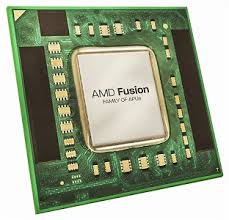
AMD company has released processors with integrated graphics, which are more correctly now called accelerated processors (APU). The main advantage of these hybrid chips is the Radeon HD 6000D graphics subsystem built into the core, providing support for DirectX 11 and acceptable gaming performance. The Fusion chip family includes two platforms - the desktop Lynx and the mobile Sabine. These platforms include accelerated processors with the design of Llano processor cores. The architecture itself is referred to as Husky. In fact, AMD engineers glued together Athlon II-level compute cores with Radeon HD 6000 graphics within a single crystal.
How do I see a potential buyer of the AMD Lynx platform:
- he wants to get an inexpensive outgrowth system with the ability to install a discrete video card;
- the computational capabilities of the Husky architecture are enough for it, but sometimes there is a desire to play simple games;
- he needs to build a quiet and productive media center;
- such a user does not care about overclocking.
Motherboard MSI A75MA-G55
The modest box hints at the motherboard form factor - mATX. On the front, you can find mention of belonging to the MSI Military Class II series.

On the reverse side, an avalanche of information about the applied technologies falls on the user.
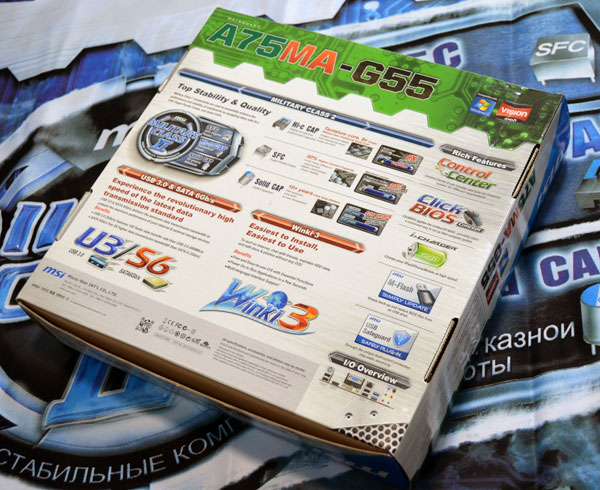
Contents of delivery:
- 2 cables SATA SATA 6Gb / s;
- adapter to supply power to the SATA;
- rear panel plug;
- Panel with two USB 3.0 connectors;
- Quick connectors adapter kit;

')
From the literature you can find the following.
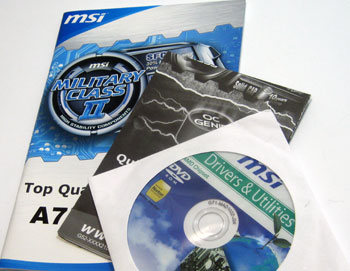
Appearance
The layout of the MSI A75MA-G55 board is quite standard and is not distinguished by something extraordinary. The product is based on the AMD A75 chipset, which involves the use of Socket FM1 processors.
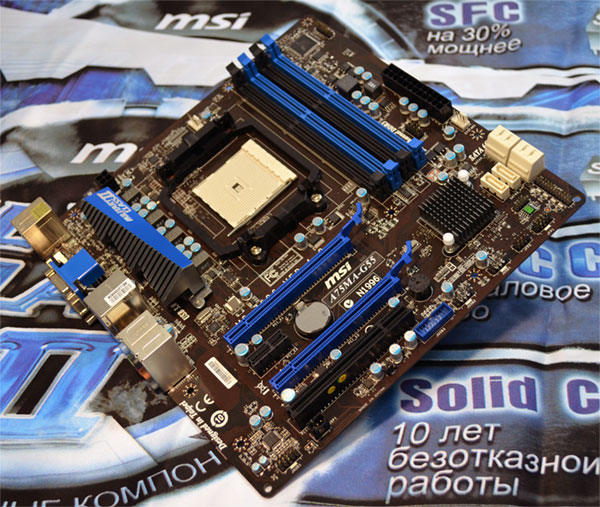
The board found space for two PCI Express 2.0 x16 slots, one PCI and one PCIE x1. It is a decent set for the format microATX. It is worth recalling that if one PCIE x1 slot is not enough, you can use the services of the second PCI Express 2.0 x16 slot and install the same sound card in it. If you buy a graphics card based on these AMD recommendations, you can get a powerful tandem from the built-in and discrete graphics - Dual Graphics.

The processor power subsystem is four phase. The MSI A75MA-G55 board is connected to the power supply using two connectors - ATX 24-pin and ATX-12V 4-pin. For the stable operation of the system, this is quite enough, however, as well as for overclocking. Considering that Llano processors do not shine with overclocking talents.
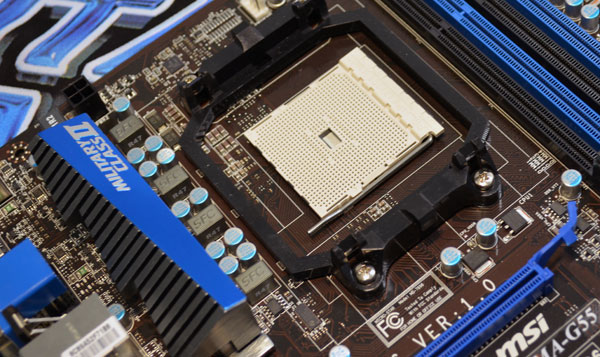
High-quality memory support is the key to AMD APU success when working with gaming applications. Integrated graphics are based on local memory capabilities. The faster this memory works, the more FPS the user sees on the monitor screen. With support for standard DDR3 RAM, the A75MA-G55 is all right. Four slots provide DDR3 memory in 1066/1333/1600/1866 modes with dual-channel access.
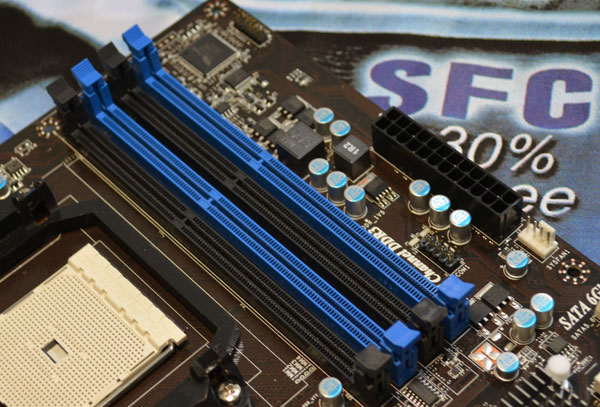
The disk subsystem is represented by a set of six SATA 6 Gb / s connectors supported by the AMD Hudson D3 chipset. It is useless to search for eSATA and ATA connectors on the board, they are not there.

The cooling system of the power components and the chipset is quite good. No more. Rather, it would be more correct to say that this is reasonable sufficiency. Again, overclocking Llano chips do not shine, and therefore remove heat from the main elements of the board in extreme mode, no longer necessary.

Bios
UEFI is used with mouse support.
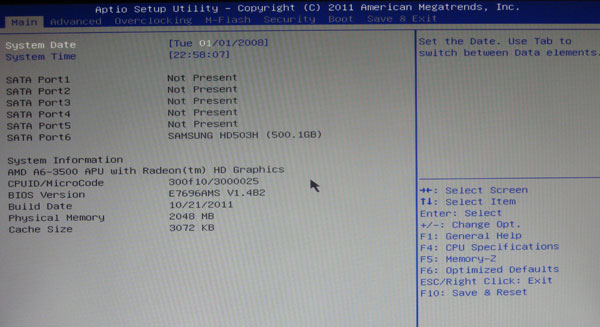
The “Overclocking” menu contains all the most interesting things that can be found in the BIOS of the A75MA-G55 board. If we consider the BIOS settings without fanaticism, then we should immediately say about the most important thing, about the settings of the memory operation mode.

If there is a possibility, then it is necessary to set the maximum possible value - 1866 MHz. In this case, the integrated graphics core in the processor can show everything it is capable of.

It is possible to overclock the processor in execution of Socket FM1 only by increasing the reference frequency. The base frequency is 100 MHz. At the same time, operating frequencies of other tires are increasing. For example, if the value is 115-120 MHz, the hard disk operating on the SATA bus may fail. With a certain luck, the processor can earn at frequencies of the reference oscillator above 133 MHz (there is a divider at this value for other buses).
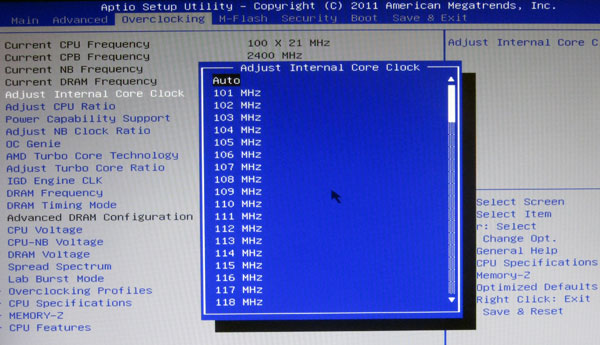
Main controllers
On the board in question, additional controllers can be counted on fingers.
Network controller based on Realtek Rtl8111E chip with support for 10Mb / s, 100Mb / s and 1000Mb / s. This controller complies with the PCI-Express Bus v1.0a specification.

Responsible for the sound controller Realtek ALC887 with support for 8 channels and compatible with the specification Azalia 1.0.
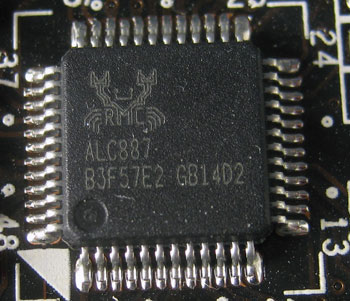
The chip Fintek F71869AD is responsible for system monitoring.
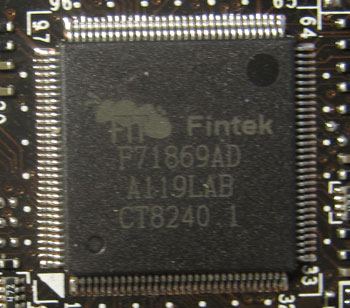
Rear panel
On the rear panel, the emphasis is on video outputs. Here you can find not only VGA and DVI, but also HDMI. In addition, for the connection of peripheral devices, there are six USB connectors - four USB 2.0 and two USB 3.0. A keyboard or a mouse with a PS / 2 connector can be connected to a PS / 2 hybrid connector. The audio output pad has six minijack connectors. Rounding out the back panel description is the standard RJ-45 port.
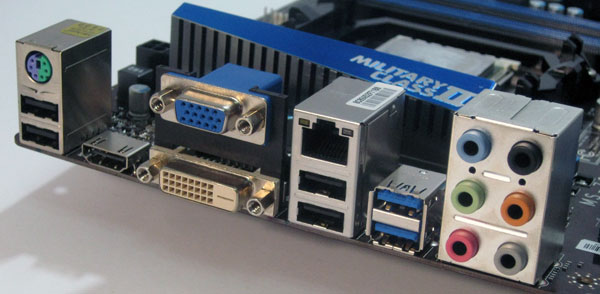
Testing
The tri-core APU A6-3500, which operates at 2100 MHz with overclocking to 2400 MHz in turbo mode, took part in the testing. The graphics in the processor is somewhat inferior to the older APUs, but it also has a sufficient number of stream processors to ensure high FPS.
If the user starts the system by default, he will receive the following frequency formula.

At what frequency the local memory works, the Radeon HD 6530D graphics also works on such a frequency. In the case of implementation of the recommendations of AMD regarding the mode of operation of the memory, the picture will change radically.
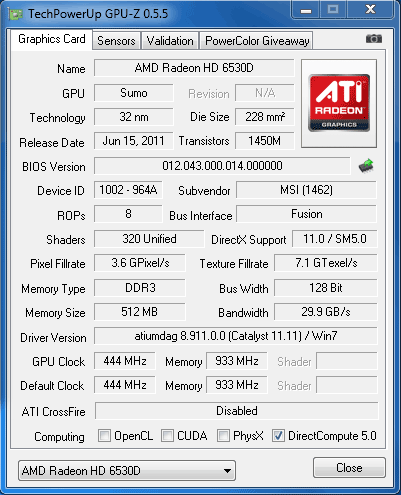
Now let's compare the performance of the integrated graphics of the flagship A8-3850 (Radeon HD 6550D) with the graphics of the Radeon HD 6530D A6-3500 chip in three tests of the 3DMark series. For completeness, let's run tests with memory in DDR3-1333 and DDR3-1866 modes.

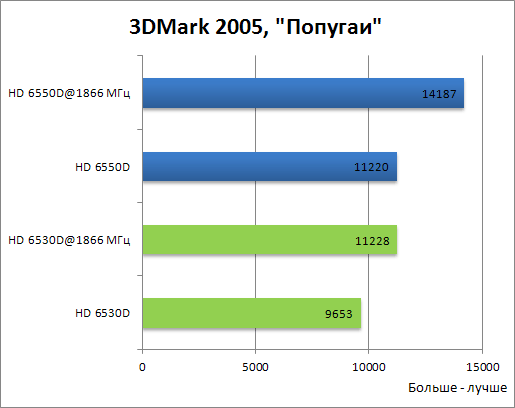

Is this the merit of the A75MA-G55? Yes. In this, she did not let down and allowed to run the memory in DDR3-1866 mode. Thanks to this maneuver, it became possible to get closer to the graphics performance of the Radeon HD 6550D, working with DDR3-1333 memory. It is safe to say that many owners of A8-3850 processors have never “visited” the BIOS menu and have not put the memory in the mode recommended by AMD.


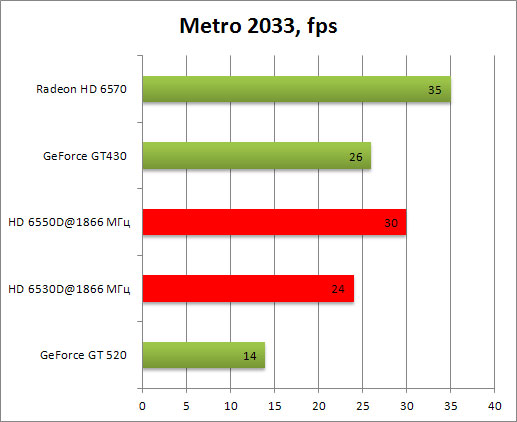
If we talk about the Radeon HD 6530D graphics, it is always faster than the GeForce GT 520 and is approximately equal in speed to the GeForce 8600 GTS graphics card. In other words, the user receives the level of performance discrete graphics for $ 50. The Radeon HD 6550D is already capable of competing with the GeForce GT430, which costs $ 60.
Conclusion
Accelerated processors of the Lynx desktop platform in real combat conditions have proven their worth. If we consider the APU as a processor, then we have the performance level of Athlon II, however, with some restrictions on overclocking. If we talk about embedded graphics, then we get previously unavailable speed in games, as for the embedded graphics core. Plus, as part of the AMD Radeon Dual Graphics technology, you can absolutely safely increase gaming performance simply by adding a discrete Radeon HD 6000 adapter.
As for the base platform, the MSI A75MA-G55 is a sort of workhorse. Good, not delivering too much trouble. It has almost everything to satisfy the user's requests within the framework of the Socket FM1 platform. Overclocking potential rests solely on the capabilities of the processor APU. The expansion options are sufficient for both the mATX format. You can find fault with the lack of a digital audio output S / PDIF, which will allow you to transmit a high-quality signal from an external audio system. For the rest, the product in question left a good impression. The strength of the accelerated Socket FM1 processors is the integrated graphics, and as shown by testing, the Radeon HD 6530D and Radeon HD 6550D cores are able to cope with games even with the settings for the average graphics quality.
Source: https://habr.com/ru/post/135507/
All Articles